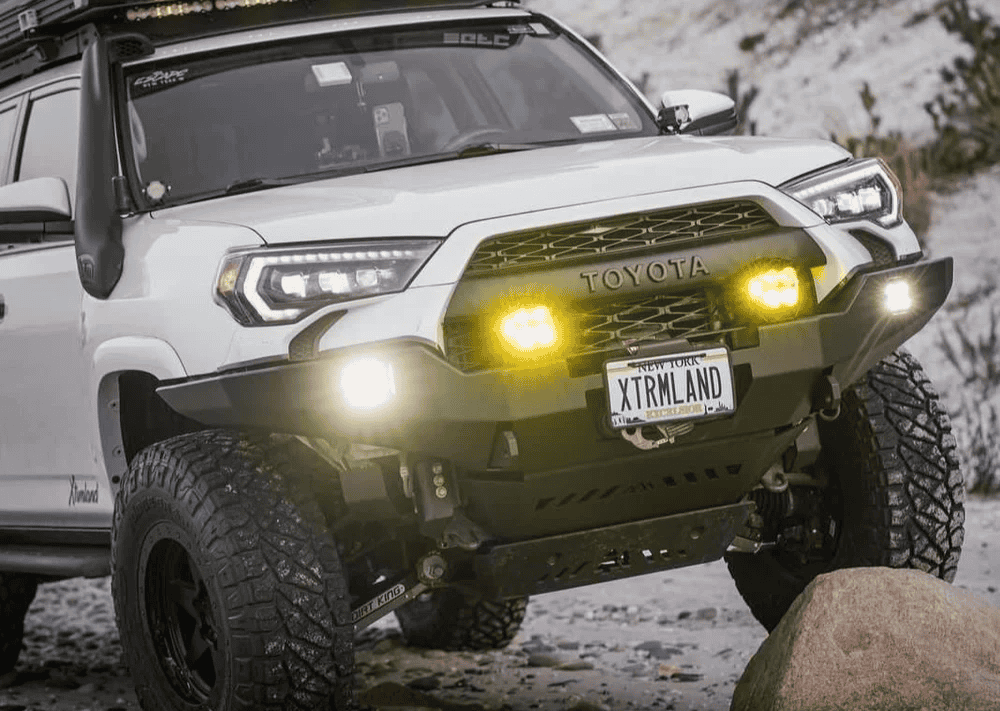Overland Vehicles

Upsizing tires increases rolling diameter, which lowers your effective final drive. The engine now has less mechanical advantage at the wheels, so acceleration softens, uphill performance drops, and the transmission hunts to maintain speed. That lost leverage also pushes operating rpm lower than the engine’s ideal torque band, which can make the vehicle feel lazy at highway speeds.
Effective ratio is simple to visualize. If you move from a 31 inch tire to a 35 inch tire on a 3.73 axle, the new effective ratio behaves like roughly 3.31. That is a significant change. Re gearing returns the final drive to a value that places the engine back in its sweet spot, restoring response and reducing unnecessary shifting.
Start with your tire diameter, transmission gearing, and typical use. Daily highway travel with occasional trails often calls for a moderate step, such as moving from 3.73 to 4.10 or 4.56. Heavier builds, tall tires, and mountain grades justify 4.56, 4.88, or even deeper ratios to keep rpm where torque is strong and transmission temperatures stay controlled.
Gas engines generally prefer higher rpm for torque and throttle response. Diesel engines make stout torque lower in the rev range, so they often need less aggressive gearing for the same tire size. Still, very large tires and added weight can push even a diesel outside its happy zone without the right ratio.
Modern automatics with many gears can mask some of the loss, but they cannot change the fundamental leverage at the axle. Manual transmissions benefit strongly from deeper axle gears, which smooth out starts and reduce clutch slip. For trail work, combine axle gears with the transfer case low range to achieve a crawl ratio that delivers slow, controlled torque instead of jerky throttle inputs.
Larger tires add weight and aero drag. Re gearing does not magically increase miles per gallon, but it can prevent a bigger drop. By placing the engine back near its most efficient torque band and reducing gear hunting, re gearing often stabilizes economy and protects the transmission from heat caused by constant shifting.
A proper re gear is more than a ring and pinion swap. Expect new bearings, races, seals, and setup components, plus careful pattern and preload setup. Vehicles with front and rear drive axles require matching ratios at both ends. If you plan to add a locker or change carriers, this is the time.
Break in matters. Most ring and pinion sets benefit from gentle heat cycles and an early fluid change after a few hundred miles. You should also address calibration. The speedometer and odometer often need an update to match the new tire diameter, which helps restore shift logic and driver aid accuracy.
Think about your build like a gear stack. Tire size, axle ratio, transmission gearing, and engine power must work together. A light weekend setup on 33s that sees freeway duty has different needs than a fully outfitted travel rig on 35s or 37s carrying water, tools, and recovery gear. Pick the ratio that serves your common miles, not the rare day on a steep trail.
Re gearing is most effective when it is part of a cohesive plan. If you upgraded to taller tires with a suspension lift and additional armor, deeper gears tie the package together. The result is clean launch behavior, steady highway cruising, and predictable climbing without constant pedal corrections.
Common symptoms include sluggish acceleration, frequent hunting between gears, higher transmission temperatures, and disappointing towing manners after a tire upgrade. If your vehicle stops using its top gear at normal highway speeds, that is a clear sign the final drive is now too tall. The earlier you correct the ratio, the easier it is on the rest of the drivetrain.
OZK Customs builds overland ready rigs where tire size, suspension, power systems, and axle gearing work as a unit. Our team guides ratio selection around your platform, tire diameter, altitude, and payload, then installs with precise setup and thorough testing. If you want a rig that pulls grades with confidence and cruises without fuss, we can make it happen.
We design and build custom overland rigs, adventure vans, and tailored upgrades that hold up to real travel. Tell us how you drive, where you go, and what you carry, and we will dial in the ratio and the rest of your setup so the miles feel effortless.
If larger tires made your rig feel sluggish or indecisive on shifts, the fix is precise re gearing matched to your driving, towing, and terrain. Tell us about your platform and tire size, and OZK Customs will recommend and install the ideal ratio as part of a cohesive overland upfit. Book your consultation and drive away with confident power, clean shift behavior, and a setup built for the miles ahead.
ADDRESS:
6159 E Huntsville Rd, Fayetteville, AR 72701
PHONE:
(479) 326-9200
EMAIL:
info@ozkvans.com